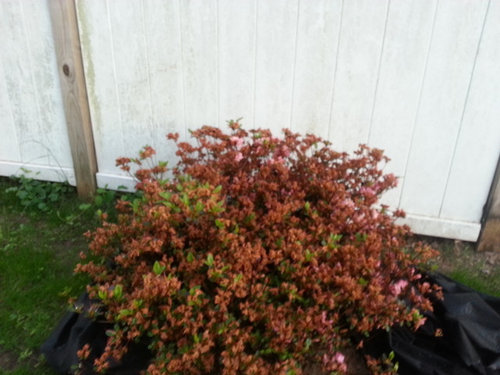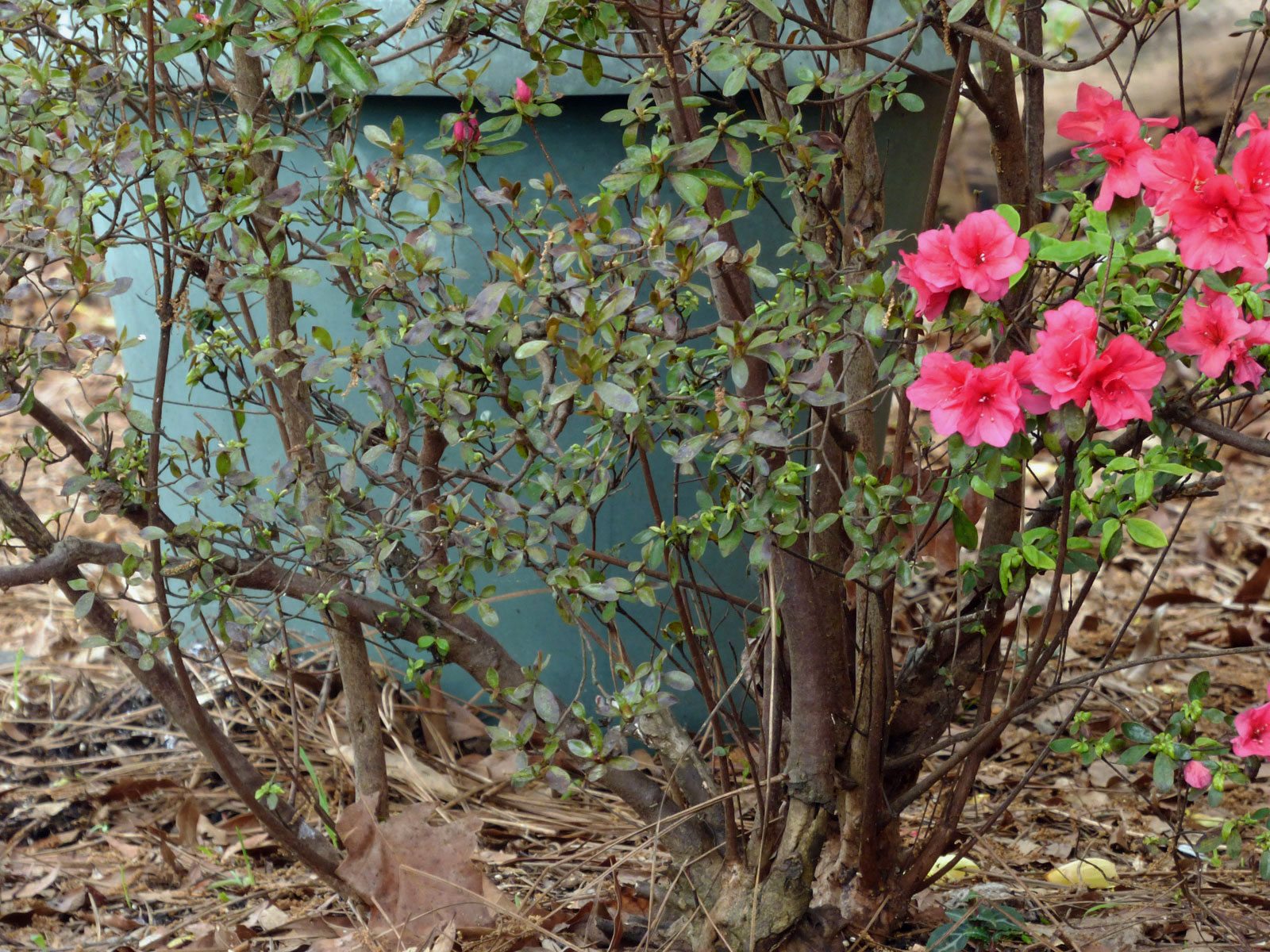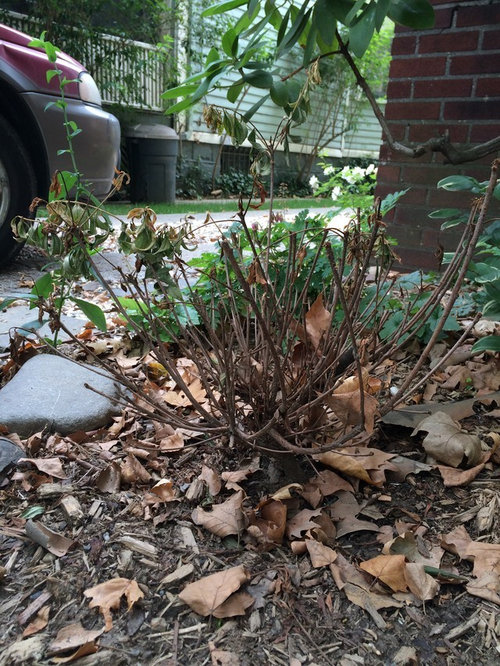- Azaleas need soil that is wet. The plant will wilt and its leaves will curl if the soil dries up. As often as necessary, water azaleas to keep the soil moist (but not saturated).
- Use rainwater instead of tap water to water potted azaleas. The acidic conditions that azaleas favor are aided by rainwater. Alkaline or pH neutral tap water is possible.
- Root rot is caused by wet soil. The soil becomes saturated when pots lack enough base drainage or when drip trays are used. Yellow/brown leaves with a withering appearance are symptoms of root rot.
- Fertilizer is needed since pots and containers have a finite capacity for nutrients. The growth of the azalea might be hampered by a lack of fertile or enriched soil.
- A lack of light will prevent growth and reduce the quantity of flowers, yet too much direct sunlight can scorch fragile azalea leaves and lead to dryness.
- Azaleas in indoor pots are susceptible to cold drafts and excessive temperatures. Drought and leaf drop can be a result of changing temperatures.
- To get nutrients, azaleas require acidic potting soil (pH 4-6). Azalea leaves frequently become yellow in less acidic soils, neutral or even alkaline environments, and the plant does not thrive for very long.
Table of Contents
1. Water Frequently (with Rainwater) to Keep the Soil Moist or Risk Drought
The soil must always be constantly moist for azaleas (without the soil being saturated).
Due to their naturally shallow root systems, azaleas are frequently among the first plants to exhibit drought symptoms (wilting appearance with leafs curling up).
Azaleas in indoor and outdoor pots need to be watered much more regularly than those in garden borders.
Water azaleas with a generous soak so that there is a trickle emerging from the base of the pot. In this manner, you may verify that the water has effectively permeated the soil.
I advise watering the azalea at least twice a week throughout the hottest months of the year. However, you should water azaleas as often as necessary to maintain wet soil.
Intense light on outdoor azaleas will heat the pots fast and accelerate soil evaporation. Beware of forced air or radiators heating up interior azaleas. These are common causes of drought.
Read my article on how much and how often to water azaleas to find out more best practices and how to determine when your azalea needs watering.
2. Use Rain Water not Tap Water
The roots of azaleas need an acidic soil environment (pH 4-6) in order to absorb nutrients. Rainwater is always preferable for watering azaleas because it tends to be more acidic and will support the acidic environment needed for azalea growth.
whereas tap water typically has a pH of 7 or even higher, which is neutral (any value above pH 7).
Even though regular watering of azaleas in pots might raise the pH of the soil and make it more challenging for the azalea to acquire the nutrients it needs, the azalea won’t mind being periodically watered with tap water if the soil has been properly prepared.
Yellow leaves and frequently stunted growth are signs of azaleas growing in soil that is too acidic. Read my post on azaleas with yellow leaves for the answer if this has happened to your plant.
3. Water Logged Soil: Drip Trays or Pots Without Drainage
Azaleas require wet but well-draining potting soil so that any excess water can drain out the drainage holes in the pot’s base.
Always select a pot with drainage holes at the base for your azaleas; otherwise, the soil will grow soggy and develop the illness root rot (Phytophthora).
Yellow or brown leaves that appear to be wilting are symptoms of stress brought either by excessive watering or by soil that is saturated rather than moist.
In order to maintain the drainage holes open and free of compacted soil so that water can freely escape from the pot, a layer of gravel at the base of the pot is frequently helpful.
If your azalea has experienced this, move it into a new pot with good drainage and add fresh soil. Examine the azalea’s roots in plain sight and remove any that are rotting or yellow. The best chance for survival for your plant is to replant it in fresh soil.
Do not make this error: Using a drip tray underneath the pot to capture the extra water so it does not make a mess is one of the most typical blunders made with indoor potted azaleas.
The issue with this is that it will stop water from escaping the pot and essentially smother the roots that lead to root rot and azalea death.
The remedy is to temporarily transfer your pot outside for, say, 30 minutes to allow the water to drain away, and then bring it back inside.
4. Lack of Fertility in Potting Soil
Azaleas generate fewer blooms and can have spindly growth if minerals aren’t given to the soil.
Use of an azalea fertilizer in the spring is the solution. Specialized azalea fertilizers support the acidic soil conditions that azalea roots need in order to absorb nutrition by containing the ideal balance of nutrients.
Over the course of the growing season, slow-release granules feed the azalea with plant food to promote growth and flowers. Wait until the spring to add fertilizer to your azalea if you think it is lacking in nutrition. Summer fertilization may encourage the growth of foliage at the expense of flowering plants.
Every few years, the azalea should be replanted to provide nutrient-rich soil and prevent the roots from becoming pot-bound. To keep a healthy plant, repot azaleas every four years or as soon as they become pot-bound.
5. Not Enough (or too much) Light
Azaleas flourish and grow at their best under light shade. Full shadow will result in fewer blooms, slower growth of the foliage, and a lanky appearance, while full light may scorch their tender leaves and induce dehydration (especially in desert locations).
Finding the ideal balance of sun and shade for your environment is essential for growing healthy azaleas.
Azaleas thrive in dappled light, which matches their natural habitat, with a low tree canopy. But 4 hours of morning sun followed by afternoon shade frequently creates a balance so that the azalea flowers while still being shielded from the glaring midday sun.
You can easily move your azalea around to obtain the ideal balance of light by using potted outdoor plants.
Plants indoors with fewer flowers should be relocated to a sunny window that receives some direct sunlight for roughly 4 hours each day.
In view of the fact that azaleas need moist soil, you should increase the frequency of watering to prevent drought as greater sunshine causes soil evaporation and azalea leaf transpiration.
6. High Indoor Temperatures (too near draught or heat source)
Locating indoor azaleas in overly warm sections of the house—often caused by radiators, forced air, or even draughts from air conditioning—is another typical mistake.
This frequently causes the typical signs of dryness, like fading foliage with curling leaves and drooping blooms. In example, if there are considerable temperature swings from a reasonably cold daytime temperature to higher temperatures at night, extremely high temperatures can also produce leaf loss.
The increased transpiration from the leaves brought on by the dry air might stress the plant even if you water it often.
A good location for the azalea is away from strong heat sources or air currents. You should also water the azalea as often as necessary to keep the soil moist (but not water logged).
7. Acidic Soil for Azaleas in Pots
Before planting, you must make sure your potting soil is acidic to ensure the plant’s health and springtime bloom.
Repotting them into soil that is more suited helps salvage azaleas that were planted in soil that was outside of the ideal range of acidity, however it might take the plant a season or two to recover.
The quickest and most accurate way to determine the pH of the soil is using a soil gauge, which can be used for both potting soil and garden soil, allowing you to plant with confidence. The best part is that they are inexpensively priced on Amazon.
I suggest planting using ericaceous (acidic) potting soil, which is available online and at garden centers, to make sure your soil has the proper pH for azaleas. For additional details on the best soil combination for indoor and outdoor potted azaleas, read my guide.
Key Takeaways:
- As their roots are quite shallow and they need the potting soil to be regularly moist but not saturated, drought is one of the major concerns for azaleas grown in pots. Indoor pots dry out due to sources of heat in the house, whereas outside pots can dry quickly in the sun.
- If at all possible, water with rainwater because tap water is frequently pH neutral (7.0) or even alkaline and rainwater is acidic (azaleas need acidic soil).
- When azaleas are in pots without adequate drainage holes in the base or drip trays capture the water and the soil becomes saturated, the roots of the plants frequently rot. Drooping foliage with yellow/brown leaves is an indication of root rot.
- Lack of soil fertility might limit growth or cause the plant to produce fewer flowers. In the spring, add slow-release fertilizer with an appropriate mix of nutrients from a specialized azalea plant food.
- Azaleas favor light shade. An azalea will grow poorly and produce fewer flowers if there is not enough light, but too much direct sunlight will cause the leaves to turn brown, the flowers to wilt quickly, and the risk of drought will rise as a result of soil evaporation and leaf transpiration. For most climates, morning daylight is best, followed by afternoon shade from hot midday sun and dappled light from a tree canopy.
- Azaleas are vulnerable to changing room temperatures since too-hot rooms might result in leaf loss and dryness. Indoor azaleas should be kept away from radiators and air currents.
- Azaleas demand potting soil with an acidic pH of 4-6. The roots of the azaleas won’t be able to take up the nutrients the plant needs if the soil has a pH closer to 7, neutral, or even alkaline. Yellow leaves, reduced development, and fewer flowers are symptoms of stress. To maintain the proper degree of acidity for a healthy azalea, amend the soil with ericaceous compost or peat moss (both acidic materials).
FAQ
How do you revive a dying azalea?
You must apply a fish emulsion to a dying azalea in order to revive it. Over the root system, apply compost, and use mulch to keep the soil moist. Azaleas will scorch and start to fade if you don’t water and mulch them during hot, dry days.
What is killing my azalea bushes?
Azalea branch dieback can be brought on by Botryosphaeria and Phytophthora, two fungi. Although fungicides may stop the illness from spreading to neighboring plants, neither disease has a feasible chemical cure.
Why are my azaleas turning brown and dying?
Insufficient irrigation is the main culprit. Azaleas and rhododendrons require our assistance when it’s scorching outside and rain is hard to come by. Twice a week, or three times if the plants don’t get afternoon shade in this weather, let a hose gently drip at the base of each plant for a few hours in the morning.
Will a dead azalea grow back?
If chopped, will azaleas grow back? Azaleas can be cut down using the same rejuvenation pruning technique as above, and they will grow back. In order for the plant to create new growth, you must make sure that you do this at the right time of year, in late winter or early spring, before the growing season.
Can an azalea be brought back to life?
Your azaleas should recover and produce a stunning fall bloom in a matter of months with a little fertilizer and direct watering at least twice a week.



